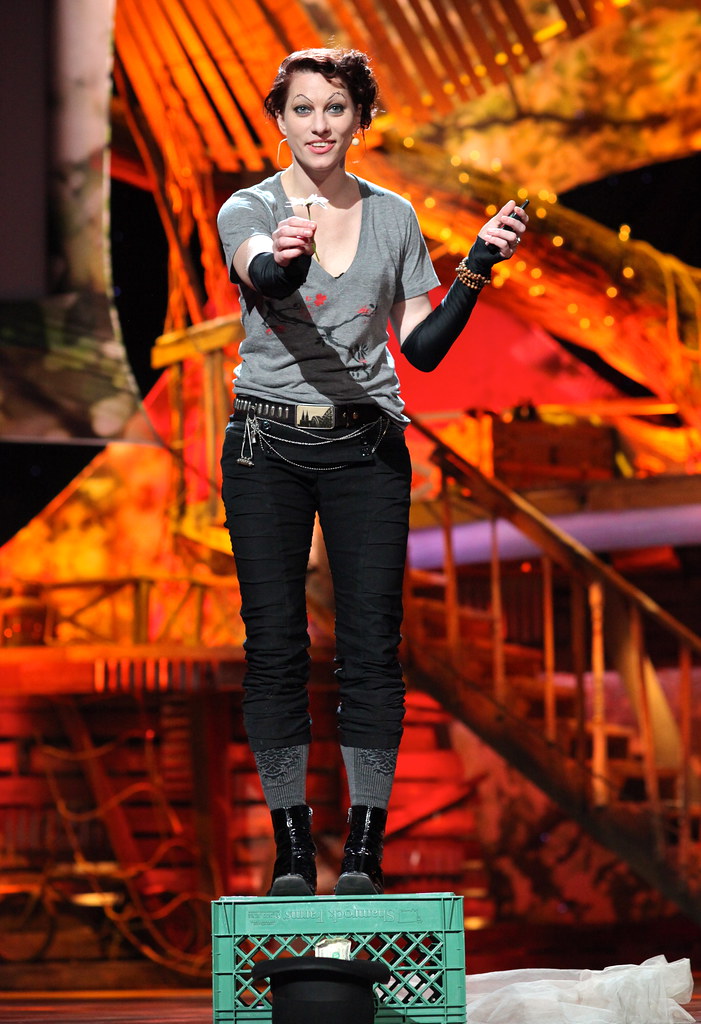
The name Amanda, a beautiful and resonant choice for generations, carries a rich history intertwined with linguistic elegance and cultural significance. Far more than just a label, it embodies a profound meaning that has traversed centuries, appearing in ancient records, gaining prominence through literary works, and ultimately becoming a staple in modern society. This enduring appeal makes “Amanda” a fascinating subject for a deep dive, revealing how a single name can hold so much historical weight and contemporary relevance.
Our exploration will journey through the very essence of the name, uncovering its Latin origins and the tender sentiment it conveys. We will chart its historical appearances, witness its popularization by influential figures, and observe its shifting standing in global naming trends. From the intricacies of its pronunciation to the variety of its forms and affectionate diminutives, the name Amanda offers a tapestry of linguistic and cultural insights, demonstrating its multifaceted identity across diverse contexts.
This comprehensive overview aims to illuminate the layers of meaning and history embedded within the name Amanda. By examining its linguistic foundations, its rise in popularity, and its various forms, we gain a clearer understanding of why this particular name has captivated parents and storytellers alike for over eight centuries. Prepare to discover the compelling narrative behind a name that consistently evokes qualities of love and admiration.

1. **The Enduring Etymology of ‘Amanda’**At its core, the name Amanda is a testament to the power of language to convey deep emotion, stemming directly from Latin. It is classified as a feminine gerundive, which functions as a verbal adjective, inherently linking it to action and quality. This linguistic construction provides its primary and most evocative meaning: “she who must (or is fit to) be loved.”
Delving further into its etymology, Amanda is derived from the stem “ama-“, which itself comes from the Latin verb “amare”, meaning “to love.” This foundational connection imbues the name with an inherent sense of affection and desirability. It suggests a person inherently worthy of love, carrying a sentiment that is both powerful and universally appealing across cultures and time.
Beyond “she who must be loved,” other translations offer similar, equally heartwarming interpretations. These include “deserving to be loved,” “worthy of love,” or “loved very much by everyone.” Each variation reinforces the name’s core message of profound affection and inherent lovability. This consistent theme undoubtedly contributes to its enduring charm and widespread adoption.
The beautiful simplicity of its meaning, combined with its strong Latin roots, sets Amanda apart. It is a name that inherently speaks of affection, a quality often sought after in a designation. This linguistic elegance ensures its lasting presence and continued resonance in the lexicon of names.

2. **A Name Through the Ages: Early Historical Appearances and Literary Popularization**While Amanda feels thoroughly modern, its roots stretch back further than many might assume, making occasional appearances even in Late Antiquity. One notable instance cites an “Amanda who was the ‘wife of the ex-advocate and ex-provincial governor Aper (q.v.); she cared for his estates and raised their children after he adopted the monastic life: ‘curat illa saeculi curas, ne tu cures'” (Paul. Nol. Epist. 44.4). This historical snippet provides a glimpse into the early existence of the name within notable societal roles.
Its formal emergence in recorded English history is marked by a birth record from Warwickshire, England, in the year 1212. This specific date underscores its long-standing heritage within the English-speaking world, positioning it as a name with significant historical depth. For centuries following this initial record, the name subtly wove itself into the cultural fabric, awaiting a resurgence.
The true popularization of Amanda, however, blossomed approximately five centuries after its initial English record. This renaissance was largely driven by the influence of poets and playwrights. These literary figures recognized the inherent beauty and meaningful connotations of the name, choosing it for characters who would then introduce it to a wider audience, solidifying its place in popular imagination.
A prime example of this literary influence is Colley Cibber’s 1696 play, “Love’s Last Shift.” This work featured a primary character named Amanda, directly drawing from the Latin word with its matching spelling and meaning. Such literary endeavors played a crucial role in elevating the name’s profile, transforming it from an occasional historical mention into a more widely recognized and cherished selection.

3. **A Chart-Topping Phenomenon: Examining Amanda’s Peak Popularity in the United States from the 20th Century Onwards**
The journey of Amanda’s popularity in the United States offers a compelling case study in naming trends, demonstrating a significant ascent from the mid-20th century. Initially, the name experienced a gradual increase in prominence, steadily climbing the ranks from the 1930s through the 1960s, eventually securing a spot among the top 200 baby names during this period. This slow but steady rise indicated a growing appreciation for its classic charm.
However, the true explosion in Amanda’s popularity occurred in the late 20th century. From 1976 to 1995, it consistently ranked among the ten most popular female baby names in the United States. This two-decade run at the top tier highlights a sustained period of widespread adoration for the name, reflecting its resonance with a generation of parents seeking both traditional elegance and approachable familiarity.
The zenith of Amanda’s appeal spanned an impressive duration, from 1978 to 1992, during which it held a position within the top four most popular names. Its absolute peak arrived in 1980, when Amanda proudly claimed the title of the second most popular female baby name in the entire country. This remarkable achievement solidified its status as a defining name of that era, echoing through playgrounds and classrooms nationwide.
While its peak popularity has since receded, Amanda remains a well-known and cherished name. In 2009, it was ranked number 166, still maintaining a respectable presence among thousands of options. Its enduring legacy is clear, having first entered the top 1,000 list in 1900 at rank #154 and continuing to be a recognizable and beloved choice for many.

4. **Global Appeal: How Amanda Has Resonated in Various Countries Beyond the US**The allure of the name Amanda extends far beyond the borders of the United States, demonstrating a notable global appeal that spans various linguistic and cultural landscapes. Its inherent beauty and profound meaning have found resonance with parents in diverse regions, contributing to its international popularity. This widespread acceptance underscores the universal charm of a name signifying lovability.
In the Latin American context, Amanda has also achieved considerable popularity, particularly in Puerto Rico. In 2009, for example, the name was ranked among the top ten names given to girls born in the territory. This highlights a strong connection within Romance language-speaking communities, where the name’s Latin origin would be readily understood and appreciated, further cementing its cultural relevance.
European nations, specifically in Scandinavia, have also embraced the name Amanda with enthusiasm. Sweden saw Amanda rank as the twentieth most popular name for girls born in 2009, a testament to its continued favor, even if it had slightly dipped from its 2008 position. Its consistent presence in such lists indicates a sustained fondness among Swedish parents.
Furthermore, within Finland, the name has shown specific popularity among Swedish-speaking families. For this demographic group, Amanda ranked among the top ten names for girls born, suggesting a cultural bridge where linguistic heritage influences naming traditions. This mosaic of international popularity demonstrates that the inherent qualities of the name Amanda transcend geographical and cultural divides, making it a truly global choice.

5. **The Sound and Identity: Delving into its Pronunciation, Gender Association, and Masculine Counterparts**
Understanding a name involves more than just its written form; its sound and the identity it confers are equally crucial. The pronunciation of Amanda is generally consistent and recognizable across English-speaking regions, articulated as “uh-MAN-duh.” This melodic flow contributes to its pleasant auditory quality, making it easy to say and recall.
For those in Spanish or Italian-speaking contexts, the pronunciation subtly shifts, often articulated as “ah-MAN-da.” This variation, while distinct, maintains the core sounds of the name, reflecting the phonetic characteristics of Romance languages. Such adaptations showcase the name’s versatility and how it naturally integrates into different linguistic environments without losing its intrinsic charm.
Unequivocally, Amanda is recognized as a feminine name, traditionally bestowed upon baby girls. Its Latin origin as a “feminine gerundive” inherently links it to female identity, and historical records, such as those from the Social Security Administration in the United States, confirm that name information for Amanda is exclusively recorded for girls. This firm gender association is a defining characteristic of the name.
However, the concept of a masculine counterpart for Amanda also exists, demonstrating the gender flexibility that often accompanies names derived from common linguistic roots. The masculine form, Amandus, is of Late Roman origin, while Amando serves as the Spanish alternative. These male variations, though less common than their feminine counterpart, complete the linguistic family of this beloved name, highlighting its diverse applications.

6. **Variations on a Beloved Theme: A Look at the Diverse Linguistic Adaptations and Alternative Spellings**
While the classic spelling of Amanda holds widespread recognition, the name has inspired a charming array of variations, each offering a unique twist while retaining the core essence of its Latin origin. These adaptations reflect both linguistic evolution and personal preference, providing alternatives for those who cherish the name’s meaning but desire a distinct presentation. Exploring these variations reveals the name’s versatility.
Many of these variations maintain a strong connection to Latin, reinforcing the name’s historical lineage. “Amada,” for instance, is a Spanish variation that directly translates to “loved,” echoing Amanda’s core meaning with a distinct cultural flavor. Similarly, “Amata” is another beautiful Latin variant that carries the same tender connotation, offering a slightly different phonetic appeal while remaining deeply rooted in the original sentiment.
Other adaptations extend the name to create more elaborate or modern interpretations. “Amandalee” and “Amandalyn” are examples of these, often blending Amanda with common suffixes to form compound names. These variations provide a sense of individuality while clearly signaling their derivation from the original, making them appealing choices for those who seek both familiarity and uniqueness in a name.
Beyond its Latin and Romance language roots, the name also sees variations that cross cultural boundaries, such as “Amandi,” which has origins in Nigerian and Igbo languages. This diverse array of variations—including Amandah and Amandine (French)—underscores Amanda’s adaptability and universal appeal, allowing it to resonate in distinct cultural contexts while preserving its inherent meaning of being worthy of love.

7. **The Art of Affectionate Shorthand: Exploring the Common Nicknames and Similar-Sounding Names Associated with Amanda**
The inherent length and melodic flow of the name Amanda naturally lend themselves to a wonderful selection of endearing nicknames, providing a more casual and affectionate shorthand for those who bear it. These diminutives are often chosen for their brevity and warmth, creating a sense of intimacy and familiarity. The commonality of these shorter forms underscores Amanda’s widespread acceptance and versatility.
Among the most frequently heard and cherished nicknames are “Manda,” “Mandee,” and “Mandi.” These options directly derive from the latter part of Amanda, offering a sweet and playful abbreviated form. Their ease of pronunciation and cheerful sound make them popular choices for friends and family alike, allowing for a personal touch while still clearly referencing the full name.
Additionally, nicknames like “Andi” and “Andy” emerge from the internal sounds of Amanda, providing another layer of creative shortening. These particular nicknames can even cross traditional gender lines in some modern contexts, showcasing the fluidity of personal monikers. The presence of multiple, distinct nickname possibilities highlights the rich flexibility inherent in the name Amanda, allowing for personalized expressions of endearment.
Beyond direct nicknames, there’s also a category of “similar names” that share a phonetic or stylistic resemblance to Amanda, appealing to those who appreciate its essence but desire an alternative. Names like Allison, Alyssa, Amy, Andrea, Elizabeth, Madeline, Lisa, and Lissa offer comparable charm and sometimes even shared linguistic heritage, making them excellent considerations for families drawn to the “Amanda” aesthetic.
Navigating the rich tapestry woven by the name Amanda, our exploration now shifts to its multifaceted presence in modern life—from thoughtful naming considerations to its vibrant appearances in both real-world achievements and the captivating realms of fiction, including a surprisingly sinister digital twist. This segment uncovers how ‘Amanda’ continues to resonate, not just as a label, but as a descriptor linked to diverse identities and cultural narratives.

8. **Crafting a Complete Profile: Considerations for Middle and Sibling Names that Complement Amanda**
Choosing a name is an art, and pairing Amanda with a harmonious middle name or selecting complementary names for siblings can significantly enhance its overall appeal. Given that Amanda begins with a vowel, opting for a middle name that starts with a consonant often creates a more balanced and melodic flow, preventing phonetic clashes and ensuring a smooth pronunciation. This careful consideration allows for a truly complete and elegant name profile.
Among the middle names that elegantly complement Amanda are options such like Carol, Charlotte, Dawn, Grace, and Faye, each offering a distinct yet harmonious rhythm. Further choices, including Lee, Leslie, Lillie, Lynn, Mae, and Marie, provide classic and beautiful pairings. More contemporary selections like Melanie and Noelle, alongside the timeless Ruth, also blend seamlessly, allowing for personal expression while maintaining the name’s inherent grace.
When expanding the family, finding sibling names that resonate with Amanda’s charm can be a delightful endeavor. For a brother, names such as Aaron, Alex, Alistar, Andrew, Anthony, and Aristedes stand out as strong and classic choices. Other fitting options include Austin, Asher, Brandon, Chris, Christopher, David, Jeremy, Joshua, Kevin, and William, all of which share a similar timeless quality and solid presence, echoing Amanda’s established heritage.
For a sister, names like Amber, Amy, Ashley, Andrea, and Ellie present a beautiful continuum, often sharing phonetic similarities or a comparable classic yet approachable vibe. Further choices such as Hannah, Jackie, Jasmine, Jessica, Kathryn, Kiara, Krystal, Lianne, Miranda, Olivia, and Sarah align well, ensuring that all siblings carry names that are both distinct and part of a cohesive family identity, celebrating individuality within a shared aesthetic.

9. **Iconic Real-Life Figures: Highlighting the Breadth of Accomplishments by Women Named Amanda Across Various Fields**
The enduring popularity and evocative meaning of the name Amanda have led to it being embraced by countless accomplished women across the globe, spanning an impressive array of professions and talents. From the arts and sciences to sports and public service, women named Amanda have consistently left their mark, embodying the inherent strength and lovability suggested by their name. Their collective achievements paint a vibrant picture of diverse success.
The world of entertainment, for instance, boasts figures such as Amanda Abbington, an English actress known for her compelling performances, and the multifaceted American actress and singer Amanda Seyfried. Other notable names include Amanda Peet, a prominent American actress, and Amanda Bynes, an actress who transitioned from child stardom. These individuals have graced screens big and small, captivating audiences with their talent and versatility across comedic and dramatic roles.
In the realm of sports and physical endeavor, the name Amanda shines brightly with several distinguished athletes. Amanda Beard, an American swimmer, is an Olympic medalist, while Amanda Anisimova represents the United States in professional tennis. The world of combat sports features Amanda Nunes, a Brazilian mixed martial artist renowned for her dominance, and Amanda Ribas, another Brazilian mixed martial artist. These athletes exemplify dedication, strength, and competitive spirit.
Beyond entertainment and sports, Amandas have made significant contributions to academia, journalism, and advocacy. Amanda Gorman, the acclaimed American activist and poet, has captivated global audiences with her powerful words. American astronomer Amanda Bauer contributes to our understanding of the cosmos, while Amanda Bennett is an American author and journalist. These women, among many others listed, demonstrate the profound impact individuals named Amanda have had on culture, knowledge, and public discourse, solidifying the name’s association with achievement and inspiration.

10. **Characters of Imagination: The Presence of Amanda in Classic and Contemporary Fictional Narratives**
Beyond the real-life luminaries, the name Amanda has also found a cherished place within the boundless landscape of fictional narratives, demonstrating its enduring appeal to creators across different eras and genres. Its inherent grace and the evocative meaning of ‘lovability’ make it a compelling choice for characters who often embody complex emotions or serve as pivotal figures in their respective stories, enriching the tapestry of popular culture.
One of the earliest and most significant literary appearances dates back to Colley Cibber’s 1696 play, “Love’s Last Shift,” where Amanda is a primary character. This work, directly drawing from the Latin word, played a crucial role in popularizing the name in English-speaking culture. The character of Amanda became an archetype, further influencing later literary works and ensuring the name’s continued presence in dramatic and romantic contexts for centuries to follow.
In contemporary media, Amanda features prominently across a wide spectrum of television, film, and video games. From the intricate web of soap operas like “Dynasty” (Amanda Carrington) and “Melrose Place” (Amanda Woodward), to the strategic depths of video games like “Grand Theft Auto V” (Amanda De Santa) and “Metal Gear” (Amanda Valenciano Libre), the name signals characters with significant plot roles, often imbued with depth and influence.
The name’s versatility extends to various other genres, including teen dramas (“The Next Step”), action thrillers (“Nikita”‘s Helen “Amanda” Collins), and even horror franchises like “Saw,” where Amanda Young serves as a complex accomplice. This breadth of representation, from iconic figures to key supporting roles, underscores Amanda’s adaptability as a name that can convey innocence, resilience, complexity, or even villainy, making it a powerful tool in storytelling.

11. **The Unsettling Inheritance: Introducing the Premise of the Horror Game “Amanda the Adventurer”**
In a captivating modern twist that adds an unexpected dimension to the cultural footprint of the name Amanda, a horror game titled “Amanda the Adventurer” has emerged, blending nostalgic aesthetics with a deeply unsettling narrative. This unique digital experience pivots from the traditional associations of the name, instead casting it within a realm of creeping dread, captivating players with its innovative approach to psychological horror and interactive storytelling.
The game’s premise begins with Riley Park inheriting their Aunt Kate’s house, a seemingly ordinary event that quickly veers into the mysterious. Tucked away in the attic, amidst the usual inherited curios, Riley discovers a stack of old VHS tapes beside a vintage television set. These tapes, remnants of an obscure children’s cartoon from the early 2000s, feature a little girl named Amanda and her timid companion, Wooly the Sheep, presenting an intriguing relic from a bygone era of animation.
What starts as a nostalgic trip down memory lane with a seemingly low-budget, locally produced children’s show soon takes a dark turn. The initial charm of the innocent cartoon, depicting Amanda and Wooly in simple adventures, gradually gives way to an unsettling realization for Riley. This subtle shift in atmosphere marks the true beginning of the horror experience, setting the stage for a unique exploration into the sinister undercurrents hidden within an unassuming piece of media.
The seemingly benign episodes, initially perceived as simple children’s entertainment, are in fact the gateway to a much deeper and disturbing mystery. Riley, driven by a growing sense of unease and curiosity, becomes drawn into the perplexing narrative unfolding on the screen, compelled to continue watching the tapes despite an instinctive gnawing feeling to stop. This initial intrigue transforms into a burgeoning fascination, hinting at the sinister interactivity that defines the game.

12. **Beyond the Cheerful Facade: Unpacking the Game’s Sinister Interactive Elements and Narrative Twists**
“Amanda the Adventurer” distinguishes itself through its profound ability to shatter the fourth wall, evolving from a simple cartoon into a chilling interactive experience where the characters directly engage with the viewer, Riley Park. This unsettling communication transcends the passive consumption of media, creating a deeply personal and increasingly disturbing connection that is central to the game’s psychological horror. The innocent facade of the children’s show rapidly deteriorates.
As Riley continues to watch, an uncanny awareness develops: Amanda and Wooly are not merely performing for an unseen audience; they appear to be communicating directly through the television set. This direct address, initially subtle and perhaps dismissible, intensifies, making the cartoon feel less like a recording and more like a live, responsive entity. This groundbreaking element elevates the game from a standard horror experience to a uniquely immersive psychological thriller.
A persistent, gnawing feeling in the back of Riley’s mind urges them to cease watching, yet an irresistible compulsion compels them forward. It is almost as if Amanda herself, through the grainy VHS playback, needs something from Riley, drawing them deeper into her enigmatic world. This intricate narrative twist transforms passive viewership into an active quest, with Riley becoming fascinated by the imperative to uncover Amanda’s true intentions and the cryptic message she transmits.
This interaction is not merely intriguing; it becomes progressively unsettling, challenging Riley’s perception of reality and fiction. The characters’ apparent awareness of their audience crafts an immersive and chilling experience that blurs the lines between player and protagonist. Each tape unravels more of the enigmatic story, compelling Riley to delve deeper into the mystery and the dark secrets lurking beneath the surface of the ostensibly cheerful children’s programming.

13. **Nostalgia Turned Nightmare: Analyzing “Amanda the Adventurer’s” Use of 90s CGI to Create Dread**
One of the most potent elements contributing to the unique horror of “Amanda the Adventurer” is its deliberate and masterful use of classic, 90s-style CGI animation. This aesthetic choice is far from arbitrary; it serves as a powerful psychological tool, tapping into a collective childhood nostalgia only to expertly subvert it into a source of profound unease and dread. The visual style becomes a crucial component of the game’s unsettling atmosphere.
The animation, reminiscent of a simpler era of children’s television, initially evokes a sense of familiarity and innocence. Players are greeted with visuals that recall beloved cartoons from their youth, creating an immediate, comfortable connection. However, this established comfort is precisely what the game exploits, turning a once-cherished visual language into a conduit for horror. The familiar becomes menacing as the narrative twists unfold.
This juxtaposition of innocent aesthetics with sinister undertones creates a palpable “creeping sense of dread.” The cheerful colors and rudimentary CGI, which would typically be reassuring in a children’s show, instead become warped and distorted by the game’s narrative. This careful manipulation of familiar visual cues generates a unique form of horror, where the very elements designed to soothe and entertain are repurposed to disturb and disorient the player.
The classic 90s CGI not only serves as a stylistic choice but also amplifies the game’s thematic core. It transforms childhood nostalgia into a nightmare, forcing players to confront the disturbing possibility that even the most innocent and comforting memories can harbor dark secrets. This deliberate artistic decision is key to the game’s success in crafting an immersive horror experience that resonates deeply with players on an emotional and psychological level.

14. **A Quest for Truth: The Immersive Puzzle-Solving and Psychological Depth of the Game’s Experience**
As Riley delves further into the mysterious VHS tapes, “Amanda the Adventurer” transcends passive viewership, transforming into an intricate and immersive puzzle-solving experience. The game is meticulously designed to challenge players with escape room-style puzzles, where clues are cleverly hidden within the animated tapes themselves, demanding keen observation and critical thinking. This interactive depth pulls players into the narrative, making them active participants in unraveling the mystery.
Each episode watched and every puzzle solved brings Riley closer to uncovering the dark secrets and true intentions behind the seemingly innocent children’s show. The plot thickens with every discovery, integrating complex layers of narrative that hint at the story’s depth and the sinister elements intertwined with Amanda’s adventures. This progression is not just about solving puzzles; it’s about piecing together a disturbing truth that lies beneath the cheerful facade.
The game’s experience is further deepened by its psychological layers, which probe into themes of manipulation, hidden truths, and the unsettling nature of perceived innocence. The blurred lines between the cartoon’s reality and Riley’s investigation create a constant tension, prompting players to question what is real and what is part of Amanda’s carefully constructed world. This psychological engagement elevates the game beyond jump scares, offering a more profound and thought-provoking horror.
Ultimately, “Amanda the Adventurer” is more than just a horror game; it’s a quest for truth, an immersive journey that captivates with its compelling storyline while unsettling players with its implications. What begins as a curious exploration transforms into a gripping psychological thriller, where the answers sought may come at an unexpected and potentially terrifying cost, leaving players to ponder the unsettling inheritance of Aunt Kate and the true nature of Amanda.
From ancient Latin roots signifying ‘lovability’ to its global embrace, the name Amanda has navigated centuries of human experience, adorning individuals who have shaped our world and characters who have captured our imaginations. It stands as a testament to the enduring power of a name to carry meaning, history, and cultural weight. Whether gracing the pages of classic literature, celebrated on global stages, or taking a chilling turn in the digital landscape of a retro horror game, Amanda remains a name synonymous with a captivating and multifaceted presence. Its journey continues, a beacon of both profound affection and unexpected mystery, affirming its place as a truly timeless and deeply resonant choice.



